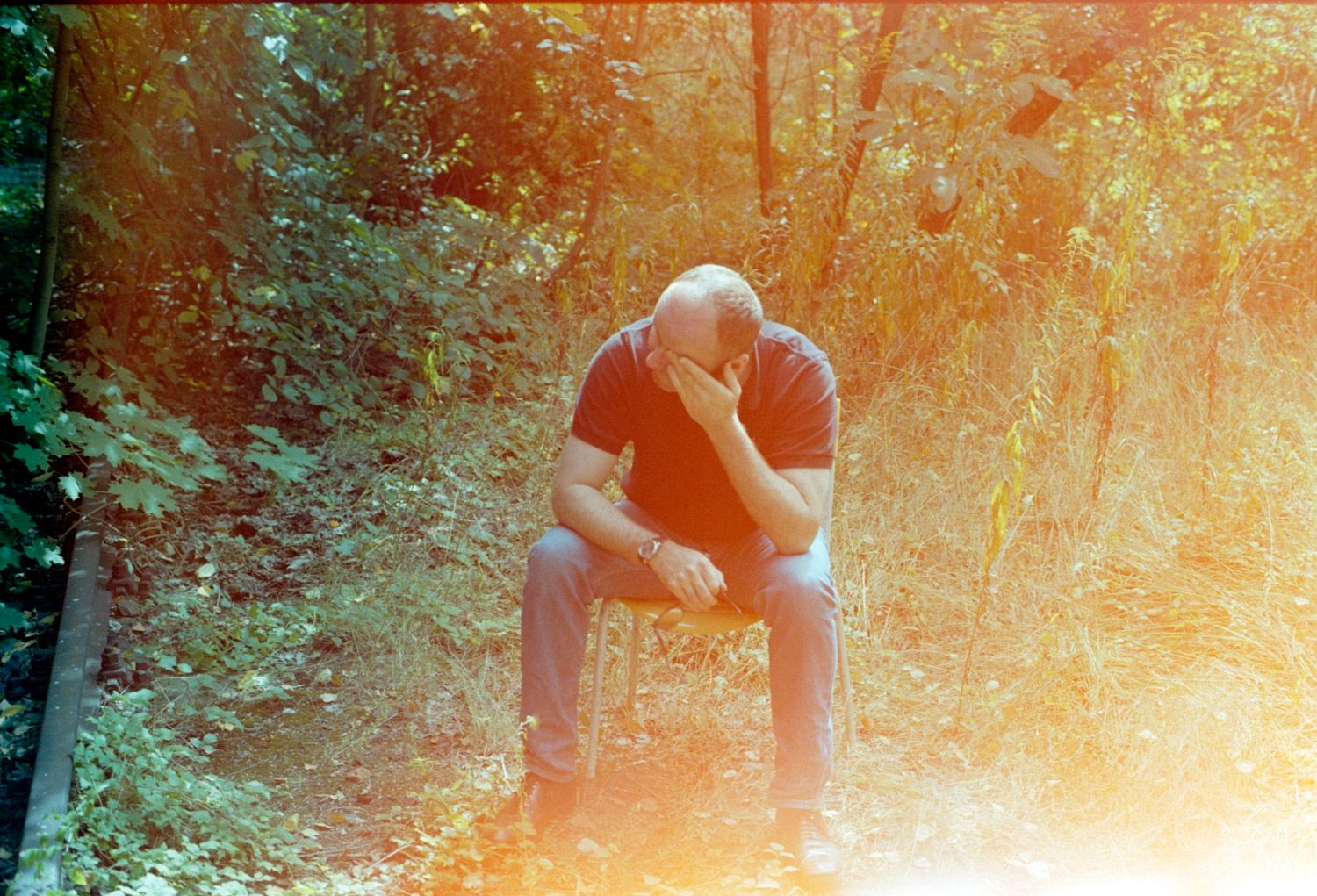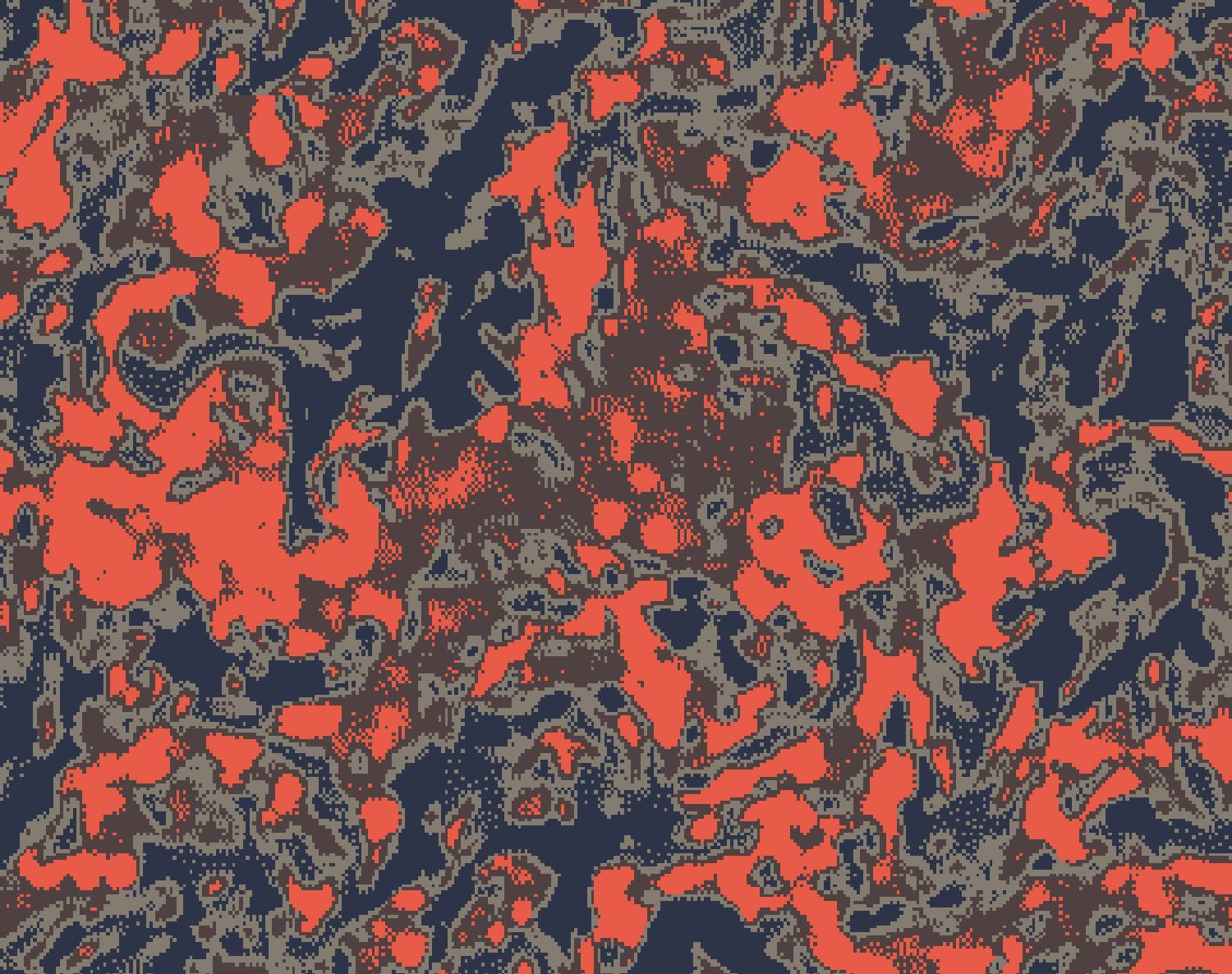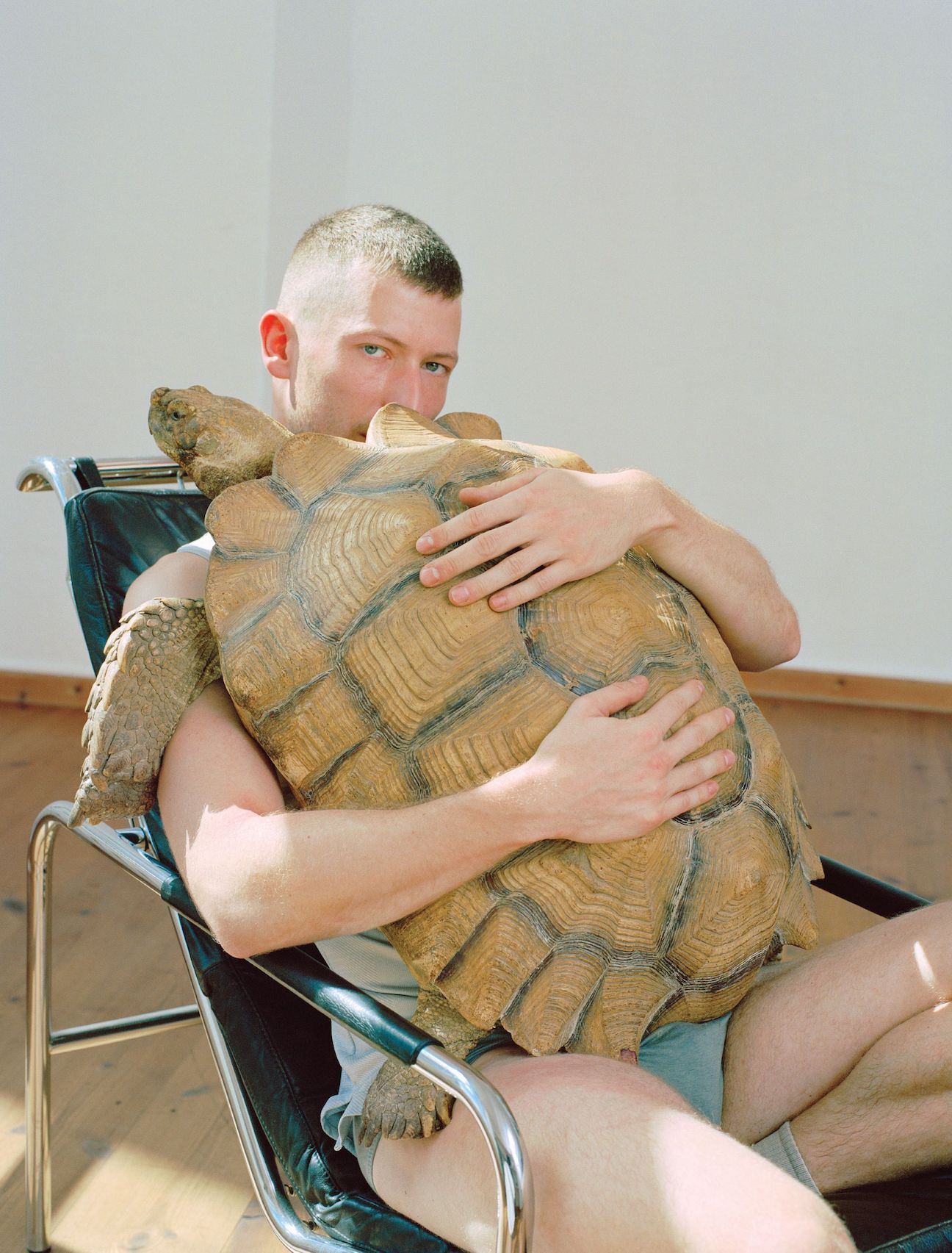Coming Into Form – THOMAS HOUSEAGO
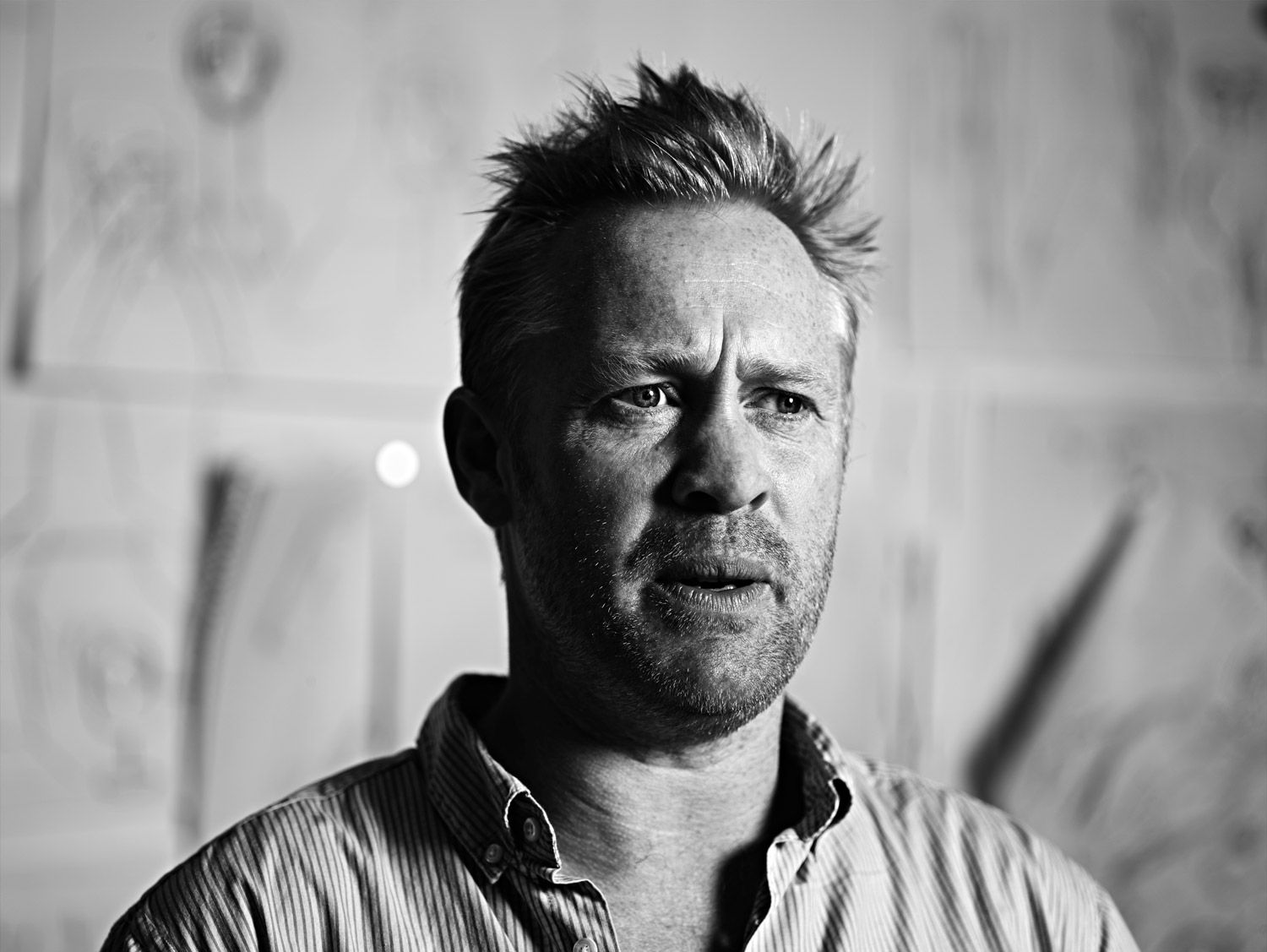
Just a few years ago, THOMAS HOUSEAGO had to destroy the sculptures he could not give away. (Who would have wanted them?) With no money, no health insurance, and a pregnant wife, he left the old World for Los Angeles – where he embarked on a career trajectory that skyrocketed in a way rarely seen in the contemporary art world.
Now, turning 40, with the world’s most powerful collectors on his side and duel openings at Hauser & Wirth in London and Zurich this september, Houseago discusses growing up on pub fights and Joy Division; why giacometti’s Walking Man is the Holy grail; depressing biennales; and a happenstance murder in front of his studio. Not to mention the single most unfashionable thing in the world (until he got his way): representative sculpture, produced in clay.
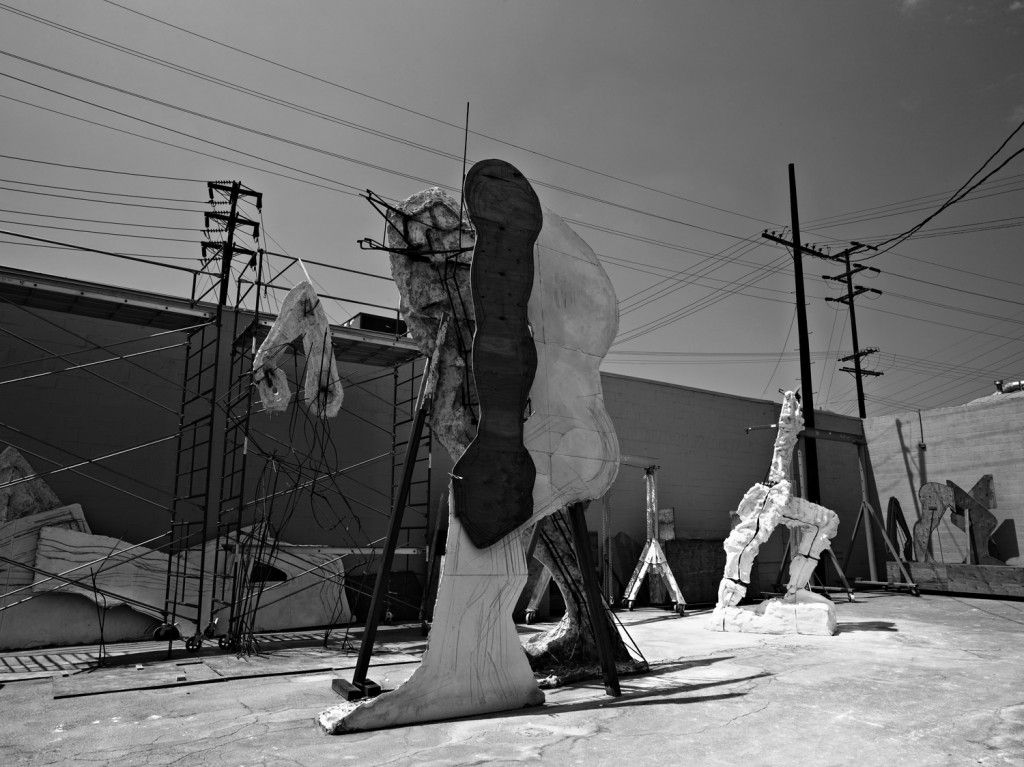
CORNELIUS TITTEL: We are sitting in your 25,000 square foot studio complex in Los Angeles. Eli Broad recently said that this is the most inspiring place for him right now. François Pinault, another collector of yours, is having his chief curator, Caroline Bourgeois, visit you tomorrow. If there is one twist of fate that made you the person you are today, that brought you from Leeds to this place, what would that be?
THOMAS HOUSEAGO: Jesus. There were many. It has been a long, bizarre, hazardous journey.
What was the first one?
Well, I remember going to London with my mom, it was a time of turmoil in my personal and family life. Plus, I didn’t really understand school. By chance there was this “Late Picasso” show at the Tate, it must have been about 1986 – I was 14-years old. This show was unusual at that time, because people weren’t sure about his late work and I guess they still aren’t. I didn’t know about all this of course. I didn’t know who Picasso was, I didn’t know if he was dead or alive, if he was Spanish or French. All I knew was that the show was blowing my mind. I just knew this guy is opening portals into this strange fucking, super-sexual world. I instantly got the absurdity of it. I knew he was laughing at himself and laughing at the role of the painter. Twenty-five years later I realized that Paul McCarthy’s video The Painter (1995) couldn’t have been done without “Late Picasso.” This show changed my course. I returned to Leeds a different person, I was like, “I have to leave home.” You have these moments with art and nobody can force you to have them. The effect was huge. People were telling me I had to do well in school to get out of town, but art was the only thing that was able to energize me.
What was your hometown like when you were growing up?
I remember Leeds as being, at times, so fucking stark and brutal. But there is a fantastic honesty and energy in cities like Leeds. There is also this great tradition of music that comes out of the North, The Beatles obviously, but also The Smiths, The Mondays, Joy Division. That is music to live to, I think to survive creatively in Leeds you needed to have a strong sense of fantasy. I lived in a dream quite a bit, which was very helpful.
And then, suddenly, you had Picasso.
And Joseph Beuys. Can you imagine? Me, being 16, in these, rough pubs, drunk out of my mind, being attacked, attacking people, this brutal thing. And then, during the day, I’m looking at a Beuys catalog and I realize that it does mean something to me, I don’t know how or why. I did not think it was pretty or attractive. But it was changing me, without having read any of the theory. At that time I was not reading about art. Isn’t that incredible? It just slowly and steadily altered the course of my life. It is still unbelievable to me, very What was it about Beuys that fascinated you? I always think of Beuys’ How to Explain Pictures to a Dead Hare (1965). Seeing these images when I was young, I really didn’t understand them in any classical sense. But the images instantly captured the idea of an artist, which was not someone who was trying to package himself as an attractive, smart, sexy, modern man. This was a bizarre, shamanic Dadaist, with a truly lyrical relationship to the world. I still don’t really know what it means but there is an urgency in Beuys – this sense of the responsibility of the artist to address fundamentals. A work which you can feel intellectually but also from the gut.
Tell me about your gut understanding of the purpose of art.
Well, I do believe art is a force for good, not in a Mother Teresa sense, but in the desire to add to the beauty of the world. I think it is important to be reminded that you are a human, that you live in a body, and that you are obliged to live with a sense of mystery. Art can help you to think openly, abstractly, sensually, to achieve a kind of negative capacity. You know there were all these fantasies about how modern the 21st century would be – that we would be in space ships and silver suits. But instead it begins with a group of guys coming out of the Middle Ages and bringing down the World Trade Center, and then this decade of war, of financial crises, banks collapsing, Europe falling apart, it’s a shocking time. How do you use your energy, stay optimistic, creative, and open to possibility?
Your point is: through art.
Yes, I think so – or it is definitely something I think helps transcend the problems of a certain time. In a perverse twist, the money people feel the same way. Not in the same emotional or sentimental sense as me – but you have major financial institutions collapsing and over 100 million dollars spent on a single sculpture by Giacometti. The hard world of finance is admitting at that moment that they trust art over stocks, insurance companies, et cetera. Something a guy made in a tiny room in France – it’s staggering. Of course it is not about the actual money – these sums are in a sense, abstract. But what’s interesting about it, is what it’s saying about the serious men who run our economy and who kill for it. I think these bankers are incredibly brutal people – I mean in the way they think about the world. They are forced into a situation where they start trusting objects. Just like me but with sums of money you could change a developing country with.
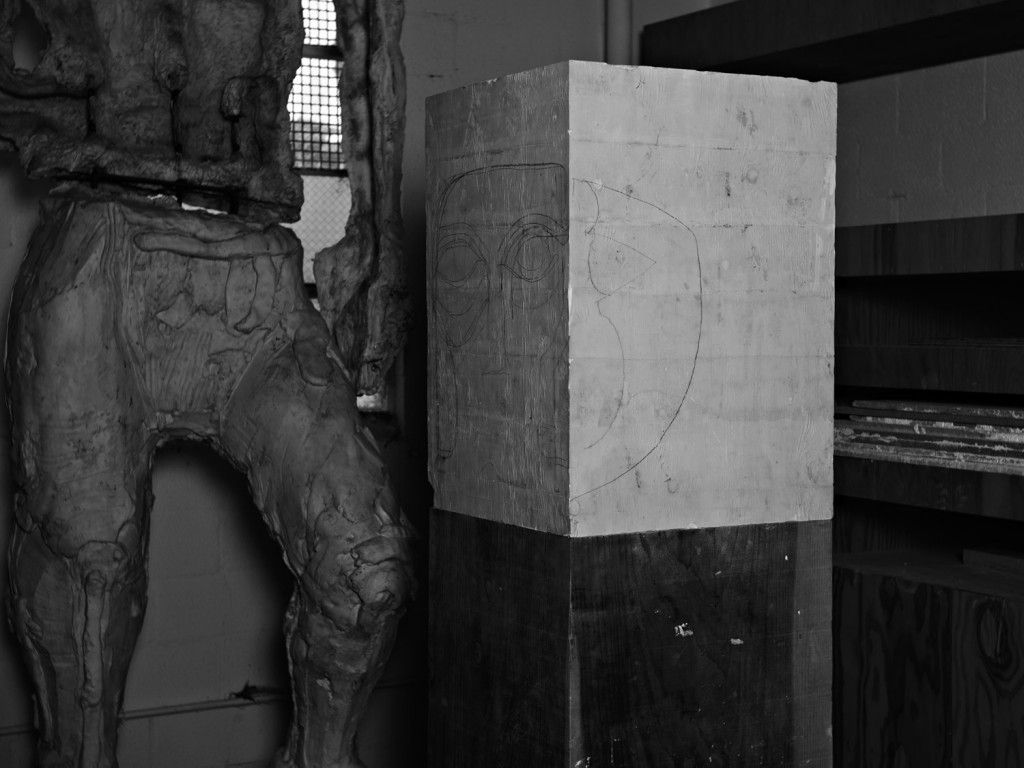
Let’s talk about your work. If I would describe what I love about it, I would say it looks like it’s coming from the future, and at the same time it looks like it has always been there.
Definitely, I remember hearing Joy Division’s “Love Will Tear Us Apart” for the first time on the radio and there was this melancholic longing that really affected me. It feels like it is ancient, like it has always been there. Actually, it sounds like those old Scottish love songs, but then it was simultaneously hyper-modern. I sometimes imagine it being like Bob Dylan’s album “John Wesley Harding.” It is the height of the 60s and everyone is doing trippy shit, listening to “Sergeant Pepper’s,” and Bob is going up to Woodstock and escaping the Factory and Warhol and the stuff going on in New York, and he writes this album. I mean it could be written by an ancient bard or by a friend of Walt Whitman. “All Along the Watchtower” is like one of those folk songs that has been passed down for hundreds of years. I was completely amazed by it. It was clearly a modern album, but could have been made in the 12th century. Art at its best has always done that. It is not just modern, it is not just old-fashioned, but it straddles this weird past/future thing. For me that is the really exciting thing. I do feel, particularly right now, it is important to create a bridge – to not be afraid of the past. I feel it can be re-examined – played with. I wanted to find out where the figure is, what has happened to it, and it’s fantastic to search through this history of representation-figuration.
When I saw your show at Contemporary Fine Arts in Berlin in 2009, I had a kind of “John Wesley Harding” moment. It wasn’t so much hippie stuff that was going on at that time, but a lot of very clever, sober, post-Conceptualist stuff, which still dominates today. Art where I felt it had been made with certain curators or critics in mind, certain institutions who might like and support it. Well, they do support it – it works. Your exhibition had nothing to do with that.
It makes me very happy to hear you say this, because this was exactly my point. It is amazing how self-sustaining this system is. I experienced this system in London, which in the 90s was the cliquiest place in the world. You had all these kids going to art schools, being taught the kind of Conceptual art that looks really good, looks professional. If you look at a lot of post-Minimalist and post-Conceptual art, it is all very tasty; it looks almost like a fashion store. If you go and buy some Margiela you think of those installations. All those tropes of Conceptualism are now being brought into selling clothes – stark, smart, clean, orderly, sweetly subversive. It is a symbiotic thing between lifestyle and how art should service a lifestyle.
You felt like an outsider in London?
Yeah, sure – but I am averse to those kinds of situations. Between the art schools, the critics, the curators, and the galleries, there seemed to be no room, and I am an artist because I want space. I mean it’s fine to have a system and people who feel they know what is or should happen and that they belong – it’s great for them. But you also need people who are wandering in the forest.
That’s a very romantic idea.
It is romantic. If you decide to be an artist, you definitely establish yourself in a romantic tradition. Any artist, however rational or hardcore, has to have a romantic strain to be able to work.
But that romanticism gets lost when your career as an artist becomes a succession of grants from certain institutions and recognition from highly subsidized shows, and then you become a teacher. Than it is more like an academic career, like becoming a well-off sociologist.
Adorno talks about the salaried thinker in Minima Moralia, about the danger of the institutional thinker who sits in some school or university and is protected. They live this safe life. When people say it is not like it used to be, that being an artist has lost this romantic aspect, then I have to say, “Hey listen, it was like that for me!” If I had died at 35 and had been celebrated after my death, I would have been the classic example of the suffering artist, an absolute cliché. My journey to America was hyper-heroic and, by the way, I did not choose this, the world chose it for me. I didn’t say I wanted to be desperately poor, go bankrupt, move to America with nothing, have my child with no health insurance, and do construction work. It was hard. By some amazing twist of fate and through the most unbelievable striving, I managed to escape. This still happens, it is still that way. The idea that art has reached some sane relationship with society is absolutely crazy. I mean if your parents aren’t rich and you embark on this journey of being an artist, you are looking at a very fucked and weird life.
Let’s go back to the beginning. What were your early influences?
I remember my childhood as very sensual and visual. Cartoons, toys, comics, films like Jason and the Argonauts. These strange figurative worlds, the animated Claymation from the 60s and 70s. Ray Harryhausen was incredible – he made amazing magic creatures. My mom did a great Spiderman mural in my room that I would stare at for hours. She also put a Lichtenstein poster up – the Whaam! one. I owe a lot to her for exposing me to these things. Music was huge for me and still is. I have vivid memories of the first time I listened to The Beatles “Magical Mystery Tour.” My dad was a huge music fan and passed that on to me – reggae, the Stones, R&B. Actually, I met Mick Jagger not long ago and got the chance to tell him that for a lot of artists of my generation – this music was our art – our avant-garde catalyst.
After seeing “Late Picasso” you decided you had to leave Leeds. But you had to wait a few years.
Yes. I had to get through school, then a year of foundation at a local art school – Jacob Kramer College – that turned out to be amazing. A totally wild time – fueled by endless cans of special brew! They would take you to the Leeds morgue to look at dead bodies and I know for a fact that had a huge impact on Hirst, who had been there some years earlier. From there I got a grant and somehow made it to St. Martins, which pretty much saved my life.
But you hated it.
No, not really, or I loved and hated it but it was a fantastic period of growth. You have to remember my generation came out of a highly negative intellectual climate about art and its possibilities. It was the death of art, the death of painting, the death of sculpture. A certain kind of political conceptualism was deemed possible. But the structure in the UK is so brutal, no artist in Britain has the ability to do something meaningful, directly political, unless you only focus on that. But then there is almost no art in it and in that moment you become a pure politician. I grew up knowing the only way to escape this brutal system was, to some extent, through sublimation – in my case through sculpture. I found that very radical. It was very personal but it released energy. I really believe that in life releasing energy and learning to do it in a positive way is key. At St. Martins there was a lot of energy, the fashion department was incredible, but I felt the art scene was quite negative.
It just slowly and steadily altered the course of my life. It is still unbelievable to me, very mystical. I was on a spiral downwards and art lifted me up.
It was the high times of the YBA’s.
Yes, and I saw the walls pulsing inwards. Everything looked so cynical in the 90s, like work I knew from the 50s and 60s, but repackaged in this shiny way. It was more about tourism, about some kind of bravado.
It was also about rebranding a nation as cool.
Absolutely. “Cool Britannia,” Tony Blair was proud of it.
And your reaction to that climate was to become a sculptor – in the most unfashionable way: Working with clay, doing figures.
Yeah. In the beginning it was a kind of reaction, but in another sense it was the only option I could see going forward at the time. Enrico David, whom I met upon arriving at St. Martins, was a big influence too – but yes, I was aware that it would go against the grain. That felt inevitable. As I said before: a long, windy, hazardous journey. I always think about when Giacometti started drawing from a model. He went from being a Surrealist sculptor, there are amazing Surrealist sculptures, to having this relationship with reality. He was humiliated by his first clumsy attempts. I knew that for me it would be absurd, this guy from Leeds, from my background, going to the schools I went to – I always felt it was highly improbable. It was like a cartoon, when you roll off a thing and then you bounce down onto another thing. I am one of these people and I dramatize this in the pieces. I hope if you look at my sculptures – if you really sit with them – you can see that I am a kid raised on cartoons and comics but that I am also fascinated by the history of sculpture, by modernism but also by Romanesque sculpture, and that I am trying to bring together a visual language and trying to do it in sculpture, which is of course the most humiliating of all.
Why?
Because things fall down. You are humiliated by gravity. It is an unbelievably inefficient, crazy way to approach art. But the joke is on me. I like that I couldn’t be this hyper-smug-savvy figure who is laughing at the world. I just wanna make sure that the act of sculpture and the act of looking at it doesn’t get lost, because I think there is always a danger that it gets lost, that society forgets that it needs it. And I think society does need it. Society needs to see objects that have no reason to be made. We spend our time in an environment where everything has a reason, presumably an economic one. Now my sculptures sell, but they did not sell for years. I’ve been making sculptures seriously for 20 years and they’ve been selling for maybe five. But it did not matter – well it did – but they were made as objects without a practical reason, and we are in a world right now where everything is practical.
You are the complete opposite of that.
Yes, I guess I am. I guess I am like a nightmare reminding everyone that even though things today are compact and beautiful, you are still born and you will still die – you are still inhabiting this strange body – this matter. There is no IT-maneuvering you can do to avoid it. So I am interested in being the fall guy, the guy who falls into a pile of clay. Clay is like the stupidest material in the world. I can spend whole days wrestling with a pile of dirt and come up with nothing. This happens to me 80 percent of the time. When my daughter asks me what I have been doing all day, I say, “I was rolling around in clay” – which I literally kind of do. And this is fascinating to me, that I am in this straight-up relationship with a material. Maybe I’ll grow out of that, but for the last few years it was important to me to have an unapologetic relationship with the material, and then for people to have a direct relationship with the object. I don’t want tricks, I don’t want special lighting, I don’t want a special way of presenting. You can’t get any better than Marcel Broodthaers in that respect anyway. I just want to throw open some other doors, so that someone can build on this again.
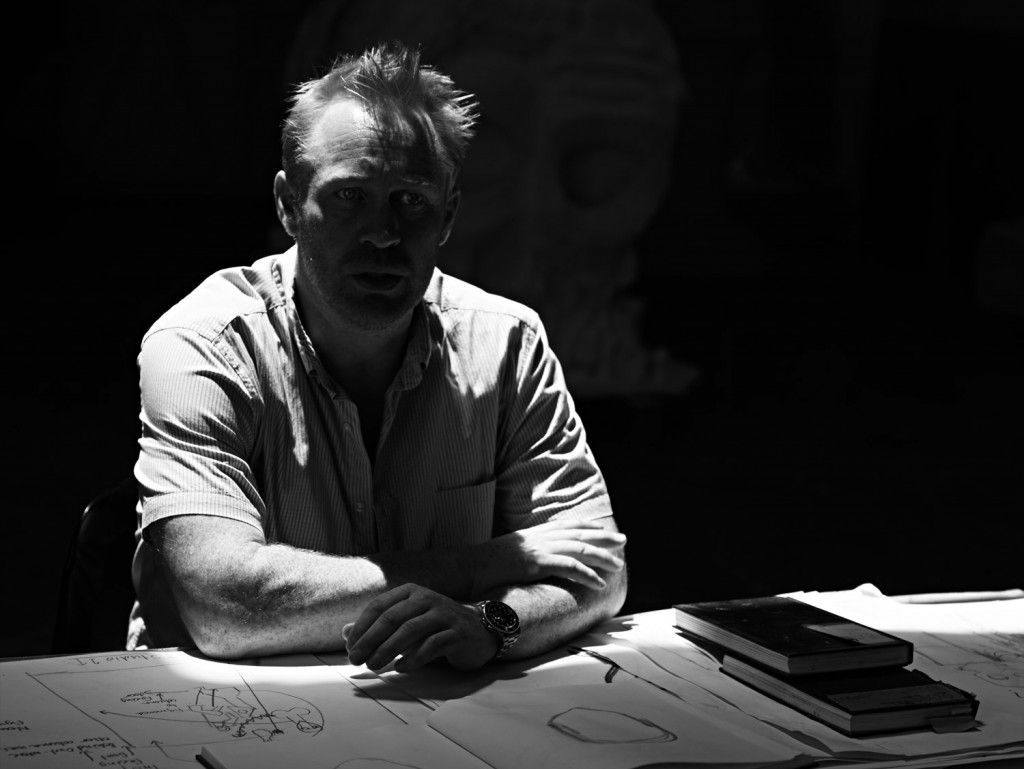
Now that you are successful and have this big studio and crew – has sculpture become less of an adventure?
No, it’s quite the opposite actually – it gets wilder as the possibilities get wilder. I am still fascinated by the impossibility of a certain kind of sculpture entering the world with that sense of mass and form. On a very basic level there are lots of times I deal with people who still don’t understand how heavy a piece is until it arrives – there is this weird surprise that it’s not an image. Like there is no conception of mass-form-weight and I like that friction. That means you have to gravitate to certain dealers and collectors. Obviously with Pinault, for example, you don’t get that. He has no fear of sculpture and understands or accepts it, which is an incredible and rare situation. But mostly it’s a struggle – a fight – kind of a Fitzcarraldo thing. I mean this movie is 100 percent the perfect metaphor for sculpture – the impossibility and the desire – the tension between a dream and physical reality. In a sense the film is a challenge – art really is trying to put an opera house in the middle of a jungle.
You told me that before you had success, the problem was not that people did not care, it was more than that.
Back in the day a studio visit could be really hostile – I mean they were mostly horrified, angry, almost offended by the projects. Art was meant to be this post-Duchampian proposition. I was looked at, as a sculptor, as a laughable, pathetic, hopeless character, which of course I was and must have loved somehow. I probably fetishized this tension back then. There is still this weird desire in me, this contradictory desire, to be successful, to be loved – but also to set up situations where that is impossible. I get frightened if it all clicks too smoothly. But on the other hand I was just following my fascination – and back in those days it was really deemed unacceptable. I mean people got really angry! But then I guess there are a lot who still are.
So for the philosophy you were building in your mind there was no future in London.
No, not at all. I went to de Ateliers in Amsterdam.
What was it like?
In Amsterdam you have the Rijksakademie and de Ateliers, which kind of have competing philosophies. At de Ateliers, the rooms are big, weird, and echoing, at the Rijksakademie they are small and have telephones. The idea at the Rijksakademie being: network, manage yourself, learn the structures of the art world. Whereas at de Ateliers, you weren’t even allowed to have a show while you were there; if you had one, you were asked to leave. De Ateliers was this kind of stern, monastic thing. Once you went in there, you went on a journey, and you were mostly talking to other artists, and it was a totally unfiltered discussion. You could meet Jan Dibbets or Thomas Schütte or Marlene Dumas and they would tell you what they thought about your work – often very unedited. Aside from friends like Enrico, there were few people who ever supported me, given me any positive feedback. It was the first time I was in an environment that I understood. I was amongst these great artists. Stanley Brouwn was hugely important to me. He would say “A work has to be strong in the universe.” He had this great cosmic sense of scale. Even though the work at de Ateliers varied a lot, there was an ethos – you’re an individual and you are on a journey and this is important, and, regardless of the thing you make, it is the journey through the world that is important. It was not like you have to look like a Marian Goodman artist before Marian Goodman will call you. It was totally anti-that.
You met your wife there, the painter Amy Bessone.
Yes. We went to Brussels afterwards, which, looking back, was totally crazy.
I thought you had your first dealer there, Xavier Hufkens.
Yes, but I was selling nothing. Every now and again he would buy the odd piece. It was more like Xavier taking pity on me, or someone accepting a piece as a gift. At certain times I couldn’t even afford to throw my work away. I mean it costs money to throw such an object away. So I gave them away if I found someone who would accept it. We were desperate. I am not talking about a little bit desperate. We went bankrupt, the Visa card was taken, the car was taken, we couldn’t pay our rent anymore, we were about to become homeless. I wasn’t a kid either. I was 33, I should have had a car and a nice apartment. So when we left to L.A., the Old World was burning down and we were on a boat to the New World. We were like pilgrims going West.
Did you have the chance to take your works with you?
No, we had 300 dollars when we arrived in the States. I couldn’t even think about transporting a sculpture. So I destroyed what I could not give away. The only thing we had was a Georg Herold brick painting he had given us for our wedding. Miraculously it survived the journey.
You say L.A. saved you.
Yes, to arrive in Los Angeles with nothing but a few friends – it either works or it doesn’t. And it worked. I mean it was tough. I was doing construction work and we had our daughter on Medi-Cal – all that American immigrant stuff!
What is that?
If you arrive in California and your wife is pregnant and you don’t have health insurance, they will help you have your baby, but the process is hyper-brutal. You are given a counselor, because normally if you have just arrived in America and don’t have insurance, you are an immigrant from El Salvador or wherever. I remember in our case they checked us for guns before we could meet our counselor. They told us, “We wanna make sure your baby doesn’t die and your wife doesn’t die, et cetera, et cetera.” You are humiliated and at the same time liberated in an absurd way. But, you know, as soon as we arrived it all started to make sense. I met other artists I could relate to. There was no dogma, you’re never gonna hear John Baldessari saying that one kind of art is better than another, or that a certain artist should not be shown. Like Paul McCarthy, I met him really early and he was always like: “Go for it!” Mike Kelly and Paul really set up a very free, strange, dynamic, exciting atmosphere for younger artists to enter. L.A. is a frontier town with a fantastic wealth of energy and that’s what really saved me.
David Kordansky, the gallerist, must have been really important to you.
I wouldn’t be the same person if I hadn’t met him. He got my work instantly! That was one of the luckiest things. In my mind it was highly improbable that I would ever have a career, the thought very rarely crossed my mind. When Dave told me he could sell my work, I thought he was joking. But he has tremendous vision and energy – he lifted me enormously – but we were both half insane in the beginning!
But he wasn’t.
No. He’s the one that brought the Rubells to my place. They were also supremely important to me. I mean when they saw my work the next thing they asked was if I ever thought about casting bronzes. They were like “Don’t worry about the costs, we’ll pay for it.” And when they included me in their show “Red Eye,” they really allowed me to become an “L.A. Artist.” This was all based on Dave’s work.
That year they were only showing artists from L.A. The opening was during Art Basel Miami in 2006.
Exactly. And this is America – some New Yorkers in Miami allowed me to become an “L.A. Artist.”
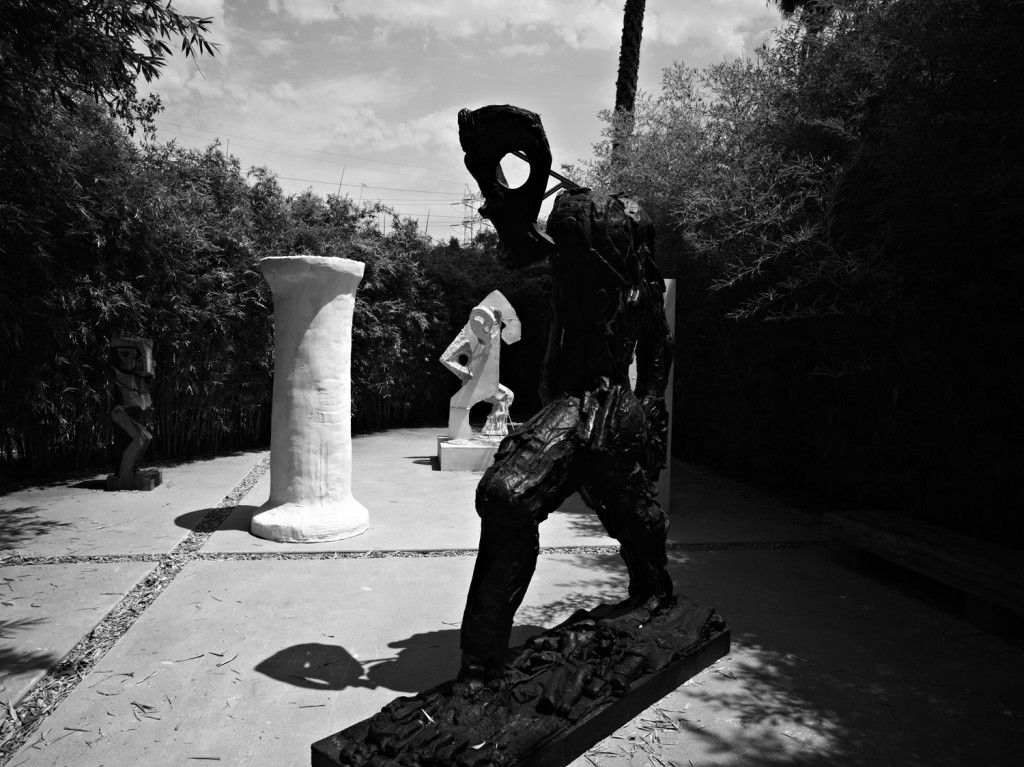
Even though you started to work with Gordon Veneklasen of Michael Werner Gallery after that show, joining a gallery roster with the likes of Sigmar Polke and Georg Baselitz, your big break must have been the Whitney Biennial in 2010. You showed a giant sculpture of a crouching man called Baby (2009) and it was so out of tune with the rest of the show that it must have been a shock for most people. Can you tell more about it?
I remember when I did the Whitney Biennial. I was out there in L.A., and I was not making a lot of money, I was surviving. And just when I was working on the piece for the Biennial, there was this enormous fire raging in the hills around L.A., next to where my wife and I lived. My wife was pregnant with our second child, in the eighth or ninth month. There was smoke everywhere; we literally had to escape from the house. There were firemen of the drive telling us that when the wind changes your house will burn down. I mean this is L.A.; people really forget that there is this natural peril. And no one tells you they will save your house because they know they don’t have it under control. So I went down to my studio in South L.A. because I had to finish this work and then one night this man was shot just outside my studio, the bullets go through the guy, through the car and into my workspace. And this poor guy is lying in front of my studio with his head blown off. A drug dealer, and while that’s a fairly common occurrence in that part of L.A. – these two factors, while I was working on this sculpture – I’m thinking, “Jesus, what is going to happen next?” I felt like danger was everywhere. If your wife is pregnant, you are nervous anyway but this sculpture really came out of this feeling of vulnerability. And then I remember delivering this piece to the museum, seeing all the other stuff in the show. And I walked down Madison Avenue thinking “I didn’t realize I was such a freak, what the fuck – this will be a catastrophe.”
“Baby” became the showstopper.
Kind of – I mean it became one of the images of the show but it was also avoided critically. During that show I had to relive the surprise that people have about sculpture being possible – the object, freestanding, et cetera. New York has a pretty tight codified art world and they received the piece like it was sent from Mars, or that’s the feeling I got. You feel these systems and rules – that are unsaid but very powerful and of course, brittle too. I guess it’s the case with all the big art centers but it can start to feel like a cul-de-sac, you feel like you see the same shows over and over with the same discourse.
Who is to blame?
Well, it’s complicated – I think the biggest problem is when it gets one-sided and academic. Also when you get curators who begin to see themselves as artists, or as these über-directors, and then artists are expected to become bit part actors to illustrate their ideas. When curators and critics start to believe they know where and how art should go, and they have real power to push an agenda, I think it gets dangerous. You get artists and students doing a lot of self-censorship in an attempt to fit, and this is unhealthy. I believe that curators and critics are very important – but I am really interested in artists – the people who really perform. I like the individual, the idea of eccentricity – the art world should have room for the unruly, the truly strange, the weirdo – or else it will all start to look like ArtForum.
You recently did a show in the Royal Botanical Garden in Edinburgh. The last artist to receive this honor was, in fact, Giacometti. This retrospective, curated by Paul Nesbitt, made me think: There are a thousand post-Duchampian artists around who do sculptures. But there are maybe only five who could handle an outdoor show like that.
You mean in the way that I approached that show – yes. I wanted to do a very classical sculpture show, in a sense, a very ancient concept of sculpture in the landscape, in dialogue with nature, this kind of thing, and I have to say I found this very frightening. I felt naked as an artist. I was totally open, not cynical in any way. I wanted the sculptures to just coexist with trees, flowers, the sky, and for the people in the park to come across them naturally. I loved that simplicity and it really changed my own view of my work. It turned out to be an incredibly important show for me. Obviously, I couldn’t have done that without Paul Nesbitt, he once said something like, “It’s really a big challenge to put a work of art next to a tree – it rarely works.” This was an extraordinary opportunity to work with a botanist/curator visionary! Let’s not forget a tree is an amazing thing – it is dealing with forces of light, water, gravity, and I realized during that show that as a sculptor – I am too.
Even though I witnessed children running towards your sculptures, stroking them, climbing onto them, asking their parents to be photographed with them, I still know a lot of people in the art world who think your work is plain ugly and wannabe Primitive.
There is nothing primitive in my work! I really think that Jeff Koons is more of a Primitivist than me! As for ugly, yes, sometimes I agree they can be quite ugly, but that’s not the point. People say I make monsters, but I don’t think I do. I am just trying to be realistic, in a sense pragmatic, about how a figure is built, made, how it feels to think about a body. How the body comes to us. There is a simplicity or rawness to working with clay, but that is because I want to see myself, my process, my thoughts clearly right now. I believe all objects – buildings, sculptures, lamps, cups – become part of a lineage of other manifestations of these objects. They are part of a history that stretches back through time – that has nothing to do with Primitivism or ugliness or whatever. Those judgments aren’t important.
Have you asked yourself why your work is suddenly in demand?
I’m really not sure – it actually surprises me. I’m still used to hostility – let’s say I can understand why it’s not liked. It was strange, like suddenly people could look at sculpture or felt it should be part of the dialogue again. It’s a very strange feeling seeing these old works of mine, all dirty and broken, from the 90s – like 15–20 years old – showing up at auction or being traded among people for fairly large sums of money, being requested for shows, et cetera, pieces I thought could have never survived! Art’s relationship to time is very interesting.
Super-curators or super-collectors – it seems quiet clear who you like, and who likes you.
Well if you make the work I do, collectors can be extremely important just in terms of production, surviving, et cetera. I am very independent and have a strong sense of the direction so I’ve found collectors to be good partners. Some have given me extraordinary opportunities, given me a lot of room. But I’ve also had fantastic relationships with curators. The museum projects I’ve worked on and am working for are generally the most exciting and challenging. But you wouldn’t have Michelangelo without the Medici or the Pope, sculpture needs benefactors.
But it can backfire. Knowing these people are on your side and earning the money you earn now, you could lose your focus. You wouldn’t be the first artist in this position.
Absolutely, I’ve seen it too. The next 10 years are critical, not as a business man but as an artist. I have enough money to work every day, to have space and comfort, so now I have no more excuses. It needs to be all about the work. It’s frightening and exciting to be free, but having been overwhelmed with not having money for such a long time I only feel more focused, more energized. The myth of the poor artist who is more “real,” “truthful,” or focused is also quite ridiculous. I’ve found out the hard way that in a capitalist system having money is very useful. It really buys you time and space – which is, of course, crucial.
When we talked last year, we discussed artworks we want to own. You told me about a magical Giacometti drawing you could not get out of your mind since you saw it in the back room of Iwan Wirth’s gallery in London. Some months later I received a card from Hauser & Wirth, saying, “We are now representing Thomas Houseago.” I immediately wondered where this drawing is now.
It’s in my bedroom and I look at it every day. It gives me courage in the morning and at night it calms me down.
Credits
- Interview: CORNELIUS TITTEL
- Photography: HEDI SLIMANE
